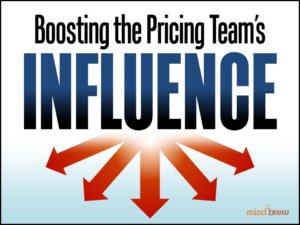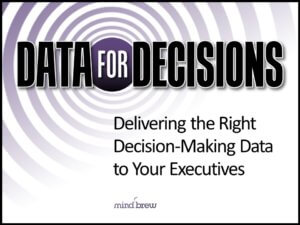Aesop (of Aesop’s Fables fame) once wrote, “Persuasion is often more effectual than force.”
That’s both good news and bad news for pricing professionals. The good news is that persuasion offers a path forward when pricing teams lack the authority to enforce change across the organization. While pricing can set new prices, introduce discount policies, or establish deal approval thresholds, they often can’t compel sales teams to follow those rules. Persuasion bridges this gap, enabling pricing teams to drive adoption and achieve their goals without relying on direct authority.
But it’s bad news because persuasion is a skill that takes time and practice to develop.
Pricing is an inherently cross-functional role. It demands alignment with sales, marketing, product management, and finance—each of which operates with its own priorities and goals. Getting even one of these teams to align with your pricing initiatives can be a tough challenge. Getting them all on board? That’s where the art of persuasion becomes essential.
For this, you need to become a master persuader.
You might be thinking, “If I wanted to spend my time convincing people, I’d have gone into sales.” Pricing professionals are often far more comfortable working with data and building models than engaging in the kinds of conversations that drive alignment.
However, no matter how brilliant your pricing strategy is, it’s only as good as your ability to convince others to implement it. Fortunately, you don’t need to be a natural salesperson to be persuasive. You just need to ensure your logical case contains four key elements.
Elements of a persuasive argument
The most effective reasoning has these things in common:
- Empathy: Start by understanding the concerns and priorities of the teams you’re trying to influence. What’s top of mind for sales? (Hint: It’s probably hitting their targets.) What makes finance worry about your pricing strategies? What would marketing love to see pricing do differently? Once you know what drives their decisions, frame your proposals in a way that addresses their pain points and helps them achieve their goals.
- Strong Data: Pricing is a data-driven function, so lean into that strength. Use compelling metrics to demonstrate the impact of your proposals. Whether it’s showing how a modest price increase won’t hurt win rates or proving the profitability gains of stricter discount controls, data is your ally. When you bring numbers to the table, it not only strengthens your argument—it builds trust in your expertise.
- A Story: While data is crucial, most people won’t remember your figures unless they’re part of a narrative. For example, instead of simply saying, “We can achieve a 10% margin improvement,” tell the story of a competitor who raised prices successfully—or share a specific deal where more disciplined discounting would have made a measurable difference. Stories make your points relatable and memorable.
- Credibility: To explain this one, we’re going to quote another famous ancient Greek. Aristotle said, “Character may also be called the most effective means of persuasion.” When you consistently deliver on your promises, your co-workers will come to trust you. Over time, your reputation as someone who is reliable and knowledgeable will grow. And that in turn will make you even more persuasive.
Incorporating these elements into your pricing conversations takes practice. Be patient with yourself and celebrate small wins. Even incremental progress can help your organization become better aligned and more effective in executing your pricing strategies.
And if you’re looking for additional resources to build your influence and persuasion skills in pricing, consider exploring the following:
- Building the Right Pricing Habits
- Being an Internal Pricing Consultant
- Boosting the Pricing Team’s Influence
- Delivering Data to Decision-Makers
We can’t force you to become more persuasive. But we hope we’ve persuaded you to at least give it a try.

















